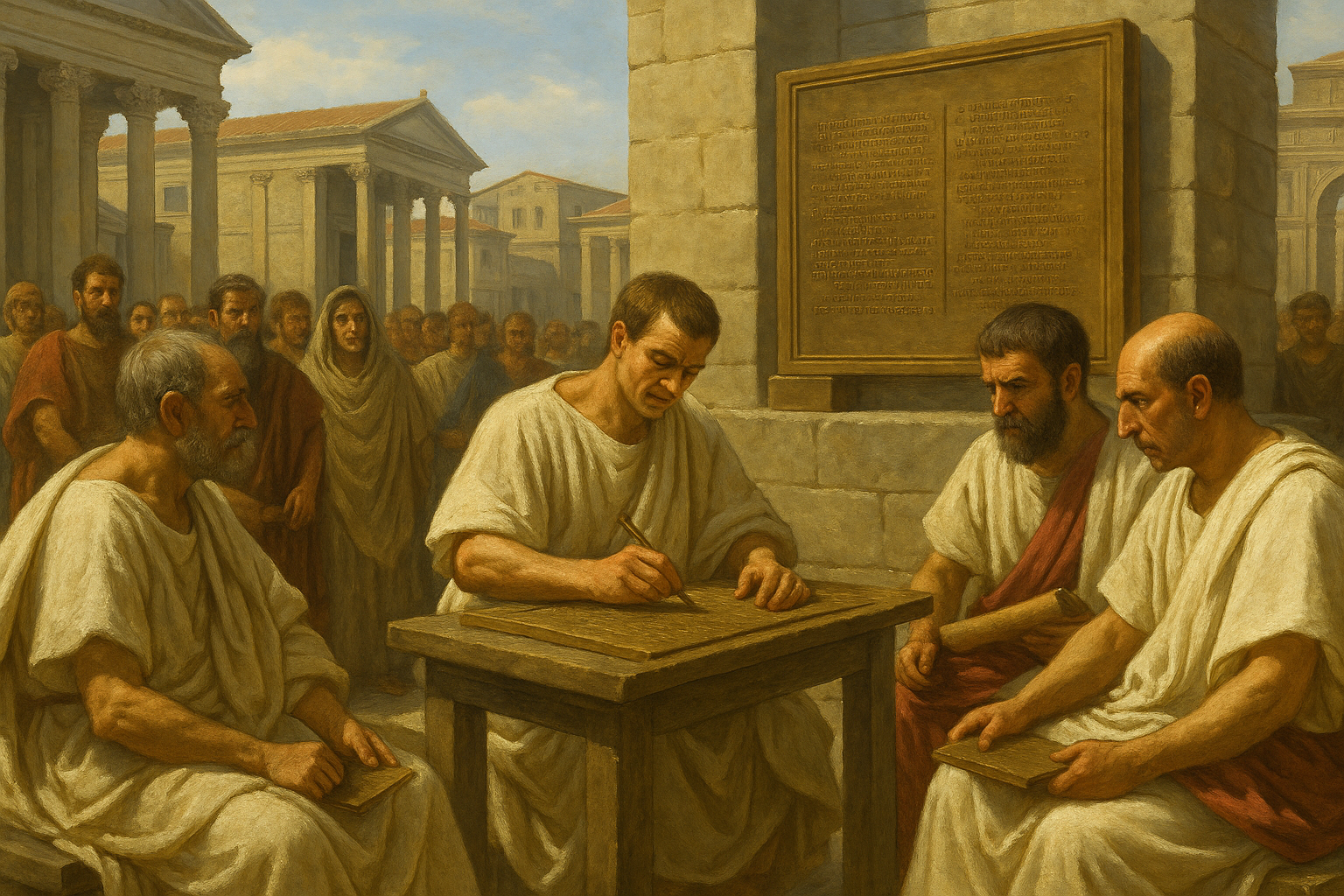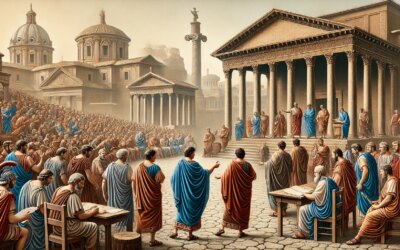From Custom to Codex: The Birth of Written Law
By the mid-5th century BC, Rome’s nascent Republic faced a critical dilemma. For decades, legal disputes had been adjudicated by patrician judges interpreting unwritten customs favoring their own class. Plebeians—common citizens excluded from high office—lacked clear recourse, fueling social tension. To resolve this, the Roman state dispatched a special commission of ten patrician magistrates, the decemviri legibus scribundis, in 451 BC to draft the first codified laws: the Law of the Twelve Tables. Displayed on bronze tablets in the Roman Forum, these laws democratized legal knowledge and provided a transparent framework for justice.
Why the Twelve Tables Mattered
Before codification, legal decisions were secretive and arbitrary. Plebeians complained that patrician magistrates concealed the true penalties for debt, assault, or property disputes. In 494 BC, the First Secession of the Plebs forced concessions, but lasting change required written statutes. The Twelve Tables made law visible and fixed. By inscribing rights and duties in public view—ranging from family law to property rights and crimes—the tablets protected plebeians from patrician bias and laid the groundwork for Roman legal order.
Content and Structure: What the Tables Contained
Though only fragments survive through later historians like Cicero and Livy, the Twelve Tables addressed diverse aspects of public and private life. Key provisions included:
- Table I–II (Procedure): Rules for court summons, legal hearings, and appeals.
- Table III (Debt): Regulations on debt bondage, stipulating limits on imprisonment and enslavement for unpaid debts.
- Table IV (Paterfamilias Authority): The rights of the paterfamilias over household members, including life-and-death power.
- Table V (Inheritance and Guardianship): Guidelines for wills, guardians of minors, and inheritance procedures.
- Table VI (Property Rights): Laws on land boundaries, trespassing, and inheritance of property.
- Table VII (Torts and Delicts): Penalties for offenses like theft, assault, and damage to property.
- Table VIII (Public Law): Regulations on funerals, sacred rites, and legal obligations to the state.
- Table IX–X (Supplementary Matters): Prohibitions on marriage between patricians and plebeians (later repealed) and rules on public morals.
- Table XI–XII (Procedural and Religious): Procedures for civil and religious trials, plus a commitment to uphold divine and human law.
Securing Rights: Plebeian Gains and Patrician Resistance
Initially, the decemviral commission held extraordinary power, suspending other magistracies during drafting. This provoked resistance, and when a second commission added Tables IX and X in 450 BC, rumors of tyranny led to the restoration of republican governance. Yet the laws endured. For plebeians, the Twelve Tables guaranteed that legal processes—from debt collection to trial—were governed by known statutes. For patricians, the code reinforced social order, codifying privileges alongside protections.
Influence on Later Legal Thought
Roman jurists in the late Republic and Empire referred constantly to the Twelve Tables. Cicero praised them as “the source of true justice” (De Legibus 3.5), and Emperor Justinian commissioned compilations that traced imperial law back to the original statutes. The concept of *lex scripta* (written law) distinguished Roman jurisprudence from Greek *nomos* (custom), influencing legal traditions across Europe. Many principles—equity before the law, property rights, contractual obligations—echo in modern civil codes.
Modern Echoes: Echoes of the Twelve Tables Today
While the exact text of the Twelve Tables is lost, their spirit lives on. Concepts such as **innocent until proven guilty**, **proportional penalties**, and **public access to law** are pillars of modern legal systems. In the aftermath of the French Revolution, lawmakers explicitly cited Roman codification as a model. The 19th-century Civil Code of France echoes the Twelve Tables’ structure of categorizing duties and rights. Across the globe, statutes continue to be publicly posted and accessible—an enduring testament to Rome’s first lawyers.
A Bronze Tablet That Shaped Civilization
What began as a solution to plebeian grievances in 451 BC─a stone’s throw from the Capitoline Hill─became a beacon of legal clarity and fairness. The Twelve Tables stand as Rome’s founding charter, a legal framework that outlived empires and inspired civil societies millennia later. In the shadow of the Forum’s ruins, we remember that transparency in law is not merely administrative—it is the bedrock of justice itself.






